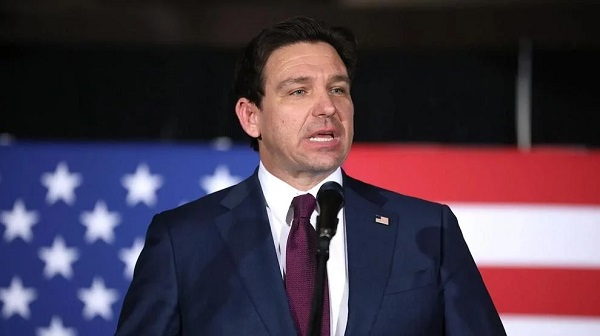Alberta
Watch: Live coverage of Premier Kenney and Dr. Deena Hinshaw: Alberta’s Relaunch Strategy

From the Province of Alberta
Below is the full release and information on Alberta’s phased relaunch plan
Alberta’s safely staged COVID-19 relaunch
A phased relaunch will put Albertans’ safety first as we gradually reopen closed businesses and services and get people back to work.
“I’m confident Albertans will approach relaunch with the same adaptability and resilience they have shown throughout the COVID-19 pandemic. We will move forward together with care and common sense, knowing tough times are still ahead. We will support and protect vulnerable Albertans and keep them safe as we build our province back up one stage at a time.” Jason Kenney, Premier
It is because Albertans have acted responsibly, respecting public health advice, that we have been able to limit the spread of COVID-19, keep localized outbreaks within the capacity of our health-care system, and now take the first incremental steps to reopen some businesses and services.
Early actions
The plan to move forward requires careful and ongoing monitoring and respecting all guidelines outlined by the chief medical officer of health:
- Alberta Health Services will resume some scheduled, non- urgent surgeries as soon as May 4.
- Dental and other health-care workers, such as physiotherapists, speech language pathologists, respiratory therapists, audiologists, social workers, occupational therapists, dieticians and more, will be allowed to resume services starting May 4, as long as they are following approved guidelines set by their professional colleges.

Alberta Parks’ online reservation system will be available May 14th. Photo by Government of Alberta
Recognizing the role that access to the outdoors and recreation in the outdoors plays to Albertans’ sense of well- being, access to provincial parks and public lands will be re- opened using a phased approach, beginning with:
- Vehicle access to parking lots and staging areas in parks and on public lands opening May 1.
- Opening a number of boat launches in provincial parks on May 1 and working to have them all open by May 14. Check albertaparks.ca for the status of boat launches.
- Government is working hard to make campsites available as soon as possible, with the goal to have as many open as possible by June 1 so Albertans can enjoy our parks while adhering to current health orders. At this time, sites are open to Albertans only. Check albertaparks.ca for updates.
- Group and comfort camping will not be offered. Campground facility access restrictions to areas such as showers, picnic and cooking shelters will also be posted to albertaparks.ca.
- Alberta Parks’ online reservation system will be available May 14 to book site visits beginning June 1. Out-of-province bookings will not be processed.
- No washrooms or garbage pickup will be available within provincial parks at this time. These services will be available as soon as Alberta Environment and Parks brings staff back. These seasonal positions represent an important opportunity for Albertans to secure employment during challenging economic times.
- Fire bans in parks, protected areas and the Forest Protection Area remain in place.
- No off-highway vehicle restrictions are currently in place. Local restrictions may be required if the risk for wildfires increases.
- Private and municipal campgrounds and parks can open with physical distancing restrictions, under their own local authority.
- Golf courses can open on May 4, with restrictions including keeping clubhouses and pro shops closed. On-site shops and restaurants can open in stage one, consistent with other businesses and retailers.
Requirements to move to next stage; Additional restrictions will be lifted in stages when safe.
Before we move to stage one, several safeguards will be put in place:
- Enhancing our nation-leading COVID-19 testing capacity at the highest level in Canada.
- Robust and comprehensive contact tracing, aided by technology, to quickly notify people who may have been exposed.
- Support for those who test positive for COVID-19, to enable isolation and effectively contain the spread.
- Stronger international border controls and airport screening, especially for international travellers.
- Rules and guidance for the use of masks in crowded spaces, especially on mass transit.
- Maintaining strong protections for the most vulnerable, including those in long-term care, continuing care and seniors lodges.
A rapid response plan is in place in the event of possible outbreaks of COVID-19. This includes outbreak protocols to quickly identify close contacts in order to stop spread, making testing widely available including testing those without symptoms in outbreak settings, and providing temporary housing for isolation and other necessary supports for anyone at risk.
Physical distancing requirements of two metres will remain in place through all stages of relaunch and hygiene practices will continue to be required of businesses and individuals, along with instructions for Albertans to stay home when exhibiting symptoms such as cough, fever, shortness of breath, runny nose, or sore throat.

Chief Medical Officer of Health Dr. Deena Hinshaw speaks about the current COVID-19 situation in Alberta.
“There are signs that our collective efforts of physical distancing, good hygiene practices, and staying home when advised are helping to slow the spread. However, we must guard against complacency and be patient to ensure the sacrifices we have already made to contain the virus are not wasted by carelessness as we gradually reopen businesses and services.” Deena Hinshaw, chief medical officer of health
Further opening in stages
Progress to Stage 1 will occur once health measures are achieved to the satisfaction of the government based on the advice of the chief medical officer of health, as early as May 14.
Stage 1 highlights:
With increased infection prevention and controls, to minimize the risk of increased transmission of infections, some businesses and facilities can start to gradually resume operations as early as May 14:
- Post-secondary institutions will continue to deliver courses, however how programs are delivered – whether online, in-person, or a blend – will be dependent on what restrictions remain in place at each relaunch phase.
- The use of masks will be strongly recommended in certain specific crowded public spaces, like mass transit, that do not allow for physical distancing (two metres apart).
Still not permitted in stage 1:
- Gatherings of more than 15 people. (Gatherings of 15 people or fewer must follow personal distancing and other public health guidelines.)
- Arts and culture festivals, major sporting events, and concerts, all of which involve close physical contact.
- Movie theatres, theatres, pools, recreation centres, arenas, spas, gyms and nightclubs will remain closed.
- Visitors to patients at health-care facilities will continue to be limited.
- In-school classes for kindergarten to Grade 12 students.
Recommendations:
- Non-essential travel, especially travel outside the province, is not recommended.
- Remote working is advised where possible.
Stage 2 highlights:
- Timing of this stage will be determined by the success of Stage 1, considering the capacity of the health-care system and continued limiting and/or reduction of the rate of infections, hospitalization and ICU cases.
- Will allow additional businesses and services to reopen and resume operations with two metre physical distancing requirements and other public health guidelines in place. This includes:
- Potential kindergarten to Grade 12 schools, with restrictions.
- More scheduled surgeries, including backlog elimination.
- Personal services, such as artificial tanning, esthetics, cosmetic skin and body treatments, manicures, pedicures, waxing, facial treatments, massage and reflexology.
- Permitting of some larger gatherings (number of people to be determined as we learn more about the levels of risk for different activities) in some situations.
- Movie theatres and theatres open with restrictions.
Visitors to patients at health-care facilities will continue to be limited.
Still not permitted in stage 2:
- Nightclubs, gyms, pools, recreation centres, and arenas will remain closed.
- Arts and culture festivals, concerts, attendance at major sporting events and other mass gatherings will continue to not be permitted.
Recommendations:
- Non-essential travel is not recommended.
Stage 3 highlights:
Timing of this stage is to be determined based on the success of stages 1 and 2 and will involve:
- Fully reopening all businesses and services, with some limited restrictions still in place.
- Permitting larger gatherings (number of people to be determined).
- Permitting arts and culture festivals, concerts and major sporting events with some restrictions.
- Permitting nightclubs, gyms, pools, recreation centres and arenas to reopen with restrictions.
- Resuming industry conferences with restrictions.
- No restrictions on non-essential travel.
Quick facts
- Relaunch stages will also include an evaluation and monitoring period to determine if restrictions should be adjusted up or down. Triggers that will inform decisions on the lessening or tightening of restrictions include hospitalizations and intensive care unit (ICU) occupancy.
- Confirmed cases and rates of new infections will be monitored on an ongoing basis to inform proactive responses in localized areas of the province.
- Decisions will be applied at both provincial and local levels, where necessary. While restrictions are gradually eased across the province, an outbreak may mean that they need to be strengthened temporarily in a local area.
- Faith-based organizations are an essential part of the lives of Albertans. They continue to be able to practice, subject to public health direction, including mass gatherings and physical distancing. Government is working with faith-based organizations to learn from past outbreaks and provide guidance related to specific practices including singing and other traditions to ensure safety while supporting social connection.
Alberta
Alberta’s huge oil sands reserves dwarf U.S. shale

From the Canadian Energy Centre
By Will Gibson
Oil sands could maintain current production rates for more than 140 years
Investor interest in Canadian oil producers, primarily in the Alberta oil sands, has picked up, and not only because of expanded export capacity from the Trans Mountain pipeline.
Enverus Intelligence Research says the real draw — and a major factor behind oil sands equities outperforming U.S. peers by about 40 per cent since January 2024 — is the resource Trans Mountain helps unlock.
Alberta’s oil sands contain 167 billion barrels of reserves, nearly four times the volume in the United States.
Today’s oil sands operators hold more than twice the available high-quality resources compared to U.S. shale producers, Enverus reports.
“It’s a huge number — 167 billion barrels — when Alberta only produces about three million barrels a day right now,” said Mike Verney, executive vice-president at McDaniel & Associates, which earlier this year updated the province’s oil and gas reserves on behalf of the Alberta Energy Regulator.
Already fourth in the world, the assessment found Alberta’s oil reserves increased by seven billion barrels.
Verney said the rise in reserves despite record production is in part a result of improved processes and technology.
“Oil sands companies can produce for decades at the same economic threshold as they do today. That’s a great place to be,” said Michael Berger, a senior analyst with Enverus.
BMO Capital Markets estimates that Alberta’s oil sands reserves could maintain current production rates for more than 140 years.
The long-term picture looks different south of the border.
The U.S. Energy Information Administration projects that American production will peak before 2030 and enter a long period of decline.
Having a lasting stable source of supply is important as world oil demand is expected to remain strong for decades to come.
This is particularly true in Asia, the target market for oil exports off Canada’s West Coast.
The International Energy Agency (IEA) projects oil demand in the Asia-Pacific region will go from 35 million barrels per day in 2024 to 41 million barrels per day in 2050.
The growing appeal of Alberta oil in Asian markets shows up not only in expanded Trans Mountain shipments, but also in Canadian crude being “re-exported” from U.S. Gulf Coast terminals.
According to RBN Energy, Asian buyers – primarily in China – are now the main non-U.S. buyers from Trans Mountain, while India dominates purchases of re-exports from the U.S. Gulf Coast. .
BMO said the oil sands offers advantages both in steady supply and lower overall environmental impacts.
“Not only is the resulting stability ideally suited to backfill anticipated declines in world oil supply, but the long-term physical footprint may also be meaningfully lower given large-scale concentrated emissions, high water recycling rates and low well declines,” BMO analysts said.
Alberta
Canada’s New Green Deal

From Resource Works
Nuclear power a key piece of Western Canadian energy transition
Just reading the headlines, Canadians can be forgiven for thinking last week’s historic agreement between Alberta and Ottawa was all about oil and pipelines, and all about Alberta.
It’s much bigger than that.
The memorandum of understanding signed between Canada and Alberta is an ambitious Western Canadian industrial, energy and decarbonization strategy all in one.
The strategy aims to decarbonize the oil and gas sectors through large-scale carbon capture and storage, industrial carbon pricing, methane abatement, industrial electrification, and nuclear power.
It would also provide Canadian “cloud sovereignty” through AI computing power, and would tie B.C. and Saskatchewan into the Alberta dynamo with beefed up power transmission interties.
A new nuclear keystone
Energy Alberta’s Peace River Nuclear Power Project could be a keystone to the strategy.
The MOU sets January 1, 2027 as the date for a new nuclear energy strategy to provide nuclear power “to an interconnected market” by 2050.
Scott Henuset, CEO for Energy Alberta, was pleased to see the nuclear energy strategy included in the MOU.
“We, two years ago, went out on a limb and said we’re going to do this, really believing that this was the path forward, and now we’re seeing everyone coming along that this is the path forward for power in Canada,” he said.
The company proposes to build a four-unit, 4,800-megawatt Candu Monark power plant in Peace River, Alberta. That’s equivalent to four Site C dams worth of power.
The project this year entered a joint review by the Impact Assessment Agency and Canadian Nuclear Safety Commission.
If approved, and all goes to schedule, the first 1,000-MW unit could begin producing power in 2035.
Indigenous consultation and experienced leadership
“I think that having this strategy broadly points to a cleaner energy future, while at the same time recognizing that oil still is going to be a fundamental driver of economies for decades to come,” said Ian Anderson, the former CEO of Trans Mountain Corporation who now serves as an advisor to Energy Alberta.
Energy Alberta is engaged with 37 First Nations and Metis groups in Alberta on the project. Anderson was brought on board to help with indigenous consultation.
While working on the Trans Mountain pipeline expansion, Anderson spent a decade working with more than 60 First Nations in B.C. and Alberta to negotiate impact benefit agreements.
In addition to indigenous consultations, Anderson is also helping out with government relations, and has met with B.C. Energy Minister Adrian Dix, BC Hydro chairman Glen Clark and the head of Powerex to discuss the potential for B.C. beef up interties between the two provinces.
“I’ve done a lot of political work in B.C. over the decade, so it’s a natural place for me to assist,” Anderson said. “Hopefully it doesn’t get distracted by the pipeline debate. They’re two separate agendas and objectives.”
Powering the grid and the neighbours
B.C. is facing a looming shortage of industrial power, to the point where it now plans to ration it.
“We see our project as a backbone to support renewables, support industrial growth, support data centres as well as support larger interties to B.C. which will also strengthen the Canadian grid as a whole,” Henuset said.
Despite all the new power generation B.C. has built and plans to build, industrial demand is expected to far exceed supply. One of the drivers of that future demand is requests for power for AI data centres.
The B.C. government recently announced Bill 31 — the Energy Statutes Amendment Act – which will prioritize mines and LNG plants for industrial power.
Other energy intensive industries, like bitcoin mining, AI data centres and green hydrogen will either be explicitly excluded or put on a power connection wait list.
Beefed up grid connections with Alberta – something that has been discussed for decades – could provide B.C. with a new source of zero-emission power from Alberta, though it might have to loosen its long-standing anti-nuclear power stance.
Energy Minister Adrian Dix was asked in the Legislature this week if B.C. is open to accessing a nuclear-powered grid, and his answer was deflective.
“The member will know that we have been working with Alberta on making improvements to the intertie,” Dix answered. “Alberta has made commitments since 2007 to improve those connections. It has not done so.
“We are fully engaged with the province of Alberta on that question. He’ll also know that we are, under the Clean Electricity Act, not pursuing nuclear opportunities in B.C. and will not be in the future.”
The B.C. NDP government seems to be telling Alberta, “not only do we not want Alberta’s dirty oil, we don’t want any of its clean electricity either.”
Interconnected markets
Meanwhile, BC Hydro’s second quarter report confirms it is still a net importer of electricity, said Barry Penner, chairman of the Energy Futures Initiative.
“We have been buying nuclear power from the United States,” he said. “California has one operating power plant and there’s other nuclear power plants around the western half of the United States.”
In a recent blog post, Penner notes: “BC Hydro had to import power even as 7,291 megawatts of requested electrical service was left waiting in our province.”
If the NDP government wants B.C. to participate in an ambitious Western Canadian energy transition project, it might have to drop its holier-than-thou attitude towards Alberta, oil and nuclear power.
“We’re looking at our project as an Alberta project that has potential to support Western Canada as a whole,” Henuset said.
“We see our project as a backbone to support renewables, support industrial growth, support data centres, as well as support larger interties to B.C., which will also strengthen the Canadian grid as a whole.”
The investment challenge
The strategy that Alberta and Ottawa have laid out is ambitious, and will require tens of billions in investment.
“The question in the market is how much improvement in the regulatory prospects do we need to see in order for capital to be committed to the projects,” Anderson said.
The federal government will need to play a role in derisking the project, as it has done with the new Darlington nuclear project, with financing from the Canada Growth Fund and Canadian Infrastructure Bank.
“There will be avenues of federal support that will help derisk the project for private equity investors, as well as for banks,” Henuset said.
One selling point for the environmental crowd is that a combination of carbon capture and nuclear power could facilitate a blue and green hydrogen industry.
But to really sell this plan to the climate concerned, what is needed is a full assessment of the potential GHG reductions that may accrue from things like nuclear power, CCS, industrial carbon pricing and all of the other measures for decarbonization.
Fortunately, the MOU also scraps greenwashing laws that prevent those sorts of calculations from being done.
Resource Works News
-

 Great Reset2 days ago
Great Reset2 days agoViral TikTok video shows 7-year-old cuddling great-grandfather before he’s euthanized
-

 Alberta2 days ago
Alberta2 days agoSchools should go back to basics to mitigate effects of AI
-

 Daily Caller2 days ago
Daily Caller2 days agoChinese Billionaire Tried To Build US-Born Baby Empire As Overseas Elites Turn To American Surrogates
-

 Business2 days ago
Business2 days agoMajor tax changes in 2026: Report
-

 International2 days ago
International2 days agoTwo states designate Muslim group as terrorist
-

 Digital ID1 day ago
Digital ID1 day agoCanada releases new digital ID app for personal documents despite privacy concerns
-

 Bruce Dowbiggin1 day ago
Bruce Dowbiggin1 day agoNFL Ice Bowls Turn Down The Thermostat on Climate Change Hysteria
-

 Censorship Industrial Complex2 days ago
Censorship Industrial Complex2 days agoDeath by a thousand clicks – government censorship of Canada’s internet






